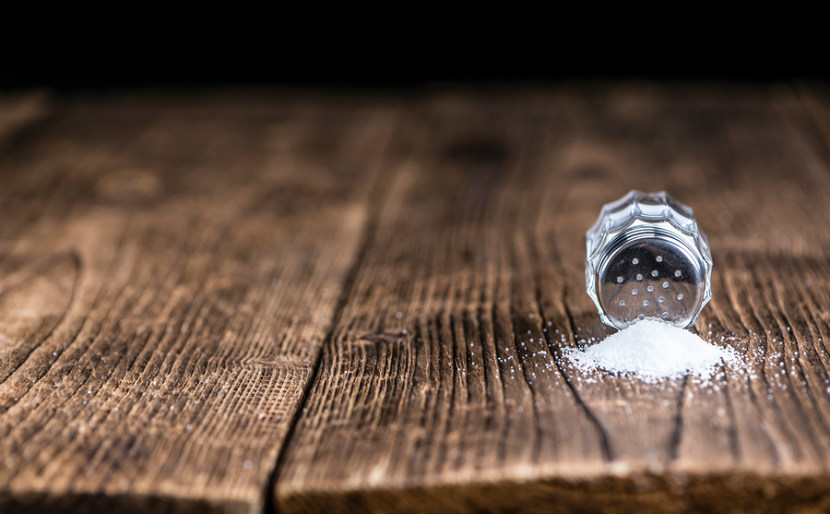
Looking for ways to limit your salt (sodium) intake? Good news! Lowering the sodium in your recipes doesn’t mean cutting out the flavour. Whether it’s a family favourite or a brand new recipe, try some of these recipe makeover ideas.
Lowering sodium is a healthy choice
Sodium is an ingredient found in table salt and many other foods. We all need a certain amount of sodium. However, eating too much sodium can lead to high blood pressure, stroke, heart disease and kidney disease. Most of us eat about 3400 mg of sodium per day. This is more than double the amount of sodium we need. Eating less sodium can help you and your family stay healthy and feel your best.
When preparing food at home, look for ways to reduce the salt you add to your cooking. Canada’s Food Guide recommends preparing foods with little or no added salt.
Limiting sodium doesn’t mean cutting out flavour
There are many ways to limit sodium when preparing food. Try some ideas below for ways you can lower your sodium intake without losing any flavour.
When Cooking
When a recipe calls for table salt, Kosher salt, sea salt, fleur de sel, gourmet salt, smoked salt, celery salt, garlic salt or onion salt:
-
Use less salt than what the recipe calls for, except when baking. Gradually cut back the salt in your recipes to see if you can taste the difference.
-
Cut out the salt in recipes a little at a time until you can use the least amount possible while still enjoying the food.
-
Flavour foods with fresh or dried herbs, like basil, dill, lemongrass or oregano. Wash, chop and store fresh herbs in the freezer.
-
Spice up your dishes! Flavour foods with spices like coriander, paprika, cumin or turmeric. Try different combinations of spices too.
-
Use crushed garlic to add flavour with no added sodium.
-
Flavour foods with citrus fruit juices or citrus zests, or flavourful vinegars such as balsamic, red or white wine vinegars.
-
If a recipe calls for adding salt to cooking water, don’t add any.
When a recipe calls for canned vegetables:
-
Look for canned vegetables that are low in sodium. The amount of sodium found in a serving of food can be found on the Nutrition Facts Table. Learn more about reading labels here.
-
Rinse canned vegetables to wash away some of the sodium.
-
Use fresh or frozen vegetables which are naturally low in sodium.
When a recipe calls for canned beans:
-
Use low sodium canned beans or try dried beans, peas and lentils.
-
Rinse canned beans, peas and lentils to wash away some of the sodium.
-
Cook your own dried beans and lentils.
When a recipe calls for condiments or seasonings like soy sauce, ketchup, barbeque sauces and salsas:
-
Use less soy sauce, ketchup and other condiments, or try the lower sodium option.
-
Prepare your own condiments and season with non-salt seasonings like garlic powder, onion powder or celery powder.
-
Use less of the seasoning that comes with taco kits, packaged macaroni and cheese, pasta and rice mixes.
-
Check ingredient lists and Nutrition Fact tables. Look for products with a sodium content of less than 15% DV. Look for foods that contain less than 360 mg of sodium per serving.
When a recipe calls for broths, soups, bouillon cubes:
-
Prepare your own broth and season it with non-salt seasonings like fresh or dried herbs, onions, garlic powder, onion powder or celery powder.
-
Choose low sodium, sodium-reduced or no added sodium varieties.
When a recipe calls for prepared tomato sauce:
-
Make a home-made sauce using 1 can (156mL) tomato paste and 1 1/3 cups (300mL) water to make 2 cups (500mL) tomato sauce. Add flavour with garlic, onion, oregano, basil, carrots and celery.
When a recipe calls for salted butter or margarine:
Recipes that use less sodium
Reduce your sodium intake with these great tasting recipes and ideas:
Vegetable Quinoa Salad
Tandoori Haddock
Curried Lentils, Sweet Potato and Cauliflower
Avocado, Beet and Chicken Tostados
Stir Fry Beef and Broccoli with Lentils
How can a dietitian help?
Dietitians can support you throughout many phases of your life from pregnancy to eating well when you are older. Counselling sessions with a dietitian can also help you to prevent and treat health conditions like diabetes and heart disease. Your dietitian will work with you to give you personalized advice that meets your lifestyle and goals. Connect with a dietitian today!
Bottom line
Reducing the amount of sodium (salt) when cooking or baking is good for your heart. There are many small ways to cut back on salt that all add up at the end of the day!
You may also be interested in:
Get the Scoop on Salt
Recipe Makeover: Reducing Sugar in the Kitchen
Recipe Makeover: Reducing the Fat in the Kitchen
Top 5 Reasons to See a Dietitian
This article was written and reviewed by dietitians from Dietitians of Canada. The advice in this article is intended as general information and should not replace advice given by your dietitian or healthcare provider.
Last Update – February 25, 2023